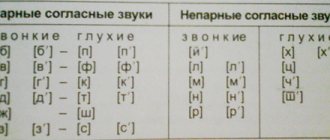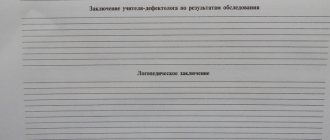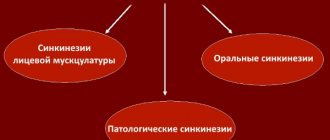Stuttering in children
It is necessary to correct stuttering with frequent sessions with a specialized specialist - a speech therapist. The work is aimed at:
- freeing the baby’s speech from excessive tension;
- elimination of incorrect pronunciation;
- formation of clear articulation, correct and expressive speech.
Speech therapy work is the basic method of therapy around which other methods of correction are built. First, classes are conducted in private with a speech therapist, who teaches the child various techniques for correct pronunciation of individual words, phrases and sounds. Then the exercises go on their own. All acquired skills are reinforced in everyday life, i.e. in communication with parents and peers.
There are several important rules for children who stutter when conducting classes:
- Planning your statement. At the very beginning of work, it is better to avoid improvisations in speech, so as not to provoke speech spasms. When a child knows what he wants to say, he becomes more relaxed and emotional tension goes away.
- Breath. Each pronunciation of a word should occur while exhaling.
- Pauses in speech. A short stop allows you to gain some air while the stutterer can think about what he wants to say next. Pauses can also be used within long sentences.
The correction is carried out by a specialist with sufficient experience. The speech therapist must take into account the individual characteristics of the child, including his age. For preschoolers, exercises should be formulated in a playful way so that they are interesting to children - this way the specialist’s contact with the child is better formed. It is important to clearly plan your classes, trying not to make them long - 20 minutes is enough.
Drug treatment is prescribed by a neurologist if the baby has neurological problems. Among the drugs most often prescribed are muscle relaxants (to relieve muscle spasms) and nootropics that improve cerebral circulation.
It is important to give the child stability so that he feels calm in his environment. You need to play with your baby more often, show him his importance in every possible way, and protect him from all kinds of stress. Only a calm atmosphere will help him cope with this problem.
If you are wondering how to counsel children with stuttering and how to determine the clinical form of stuttering, the severity of stuttering, the location and form of seizures. If you also want to avoid mistakes when correcting stuttering, we are waiting for you at the practical intensive “Stuttering: symptoms, modern methods of correction”!
You will learn:
1. differentiate between iterations and true stuttering;
2. apply massage techniques for stuttering by L.N. Meshcherskaya. and Arkhipova E.F.
3. write a psychological and pedagogical conclusion correctly;
4. recommend the use of a reminder and rules of speech for stuttering and hydrotherapy sessions at home.
Would you like more information about the intensive? Click here!
Independent website about stuttering
The development of a modern comprehensive approach to overcoming stuttering
was preceded by the development of a number of different methods and ways to overcome this disease. The large number and sometimes insufficient effectiveness of these methods are explained by the complexity and diversity of manifestations of stuttering itself and the level of knowledge about its nature.
When analyzing existing methods of overcoming stuttering
It seems to us appropriate to consider them depending on the nature of the recommended means of influence on a stutterer - medical or pedagogical. In one case these are therapeutic measures (therapeutic, surgical, orthopedic, psychotherapeutic), in another - measures of education and training (didactic techniques) and, finally, in the third - various combinations of therapeutic and pedagogical influences.
Therapeutics for overcoming stuttering
have been used in varying degrees and forms at all times, starting with the ancients (Hippocrates, Aristotle, Celsus, Galen, Avicenna, Mercurialis, Klenke, Lichtinger, etc.). As a rule, therapeutic agents were not exhaustive in the treatment of stuttering, but only supplemented it to one degree or another.
Surgical treatment for stuttering
used since the 1st century.
AD until the middle of the 19th century, until the opinion about its uselessness and danger of use was finally established (Antillus, Aegina, Fabricius, Dionysus, Dieffenbach, Petit, Bonnet, etc.). The surgical method appeared as a result of the understanding of stuttering as a consequence of the pathological structure of the articulatory apparatus or insufficient innervation of the muscles of the tongue. The ineffectiveness of this method and, most importantly, the emergence of a new stage in the understanding of the pathogenesis of stuttering as a neurotic disorder
put an end to the use
of surgical intervention for stuttering
.
In the literature on overcoming stuttering
There are also numerous indications of the need to use orthopedic aids that facilitate and correct speech and various motor exercises.
The use of mechanical devices for orthopedic purposes dates back to Demosthenes, who, according to Plutarch’s description, successfully used foreign objects (sea pebbles) to treat his own stuttering, holding them under the tongue during speech exercises
. Subsequently, specialists used various mechanical devices in the treatment of stuttering: a tongue fork; lingual depressor and lip spacer; overlays for both rows of teeth; a wooden plate in the shape of an arc under the tongue; whalebone bracket for lower teeth, etc.
Orthopedic devices, however, had no independent value in the treatment of stuttering
and were recommended as additional means.
Treatment for stuttering
, like any disease itself, it is unthinkable to consider without taking into account the healing effect of the doctor’s personality on the patient, conversations with him about the essence of the disease and ways to overcome it, without creating certain conditions for favorable treatment, maintaining faith in its positive outcome, and convincing him of the need for the patient’s active participation in the treatment process, etc.
Consequently, all methods of overcoming stuttering,
, had, to varying degrees, a targeted psychotherapeutic effect on the psyche of people who stutter.
With the advent of views on stuttering as a neurotic disorder, some authors began to attach paramount importance to psychotherapeutic effects in overcoming it (Bertrand, Schulthess, Lagusen, Merkel, A. Libman, G.D. Netkachev, Frechels, etc.). Supporters of the psychological approach to overcoming stuttering
They saw it primarily as mental suffering. Therefore, when choosing means of influence on a stutterer, they first of all took into account the influence of these means on his psyche.
Supporters of only didactic methods of teaching correct speech to a stutterer
recommended systems of varied and progressively more complex speech exercises, covering both individual elements of speech and speech as a whole (Soranus of Ephesus, Caelius Aurelian, Oribazius, Itar, Lee, Cohen, Dengardt, A. Gutzman, A. Kussmaul, Andres, Himiller, etc. .).
Isolated use of pedagogical or therapeutic measures in the treatment of stuttering
, of course, impoverished the therapeutic effect on the patient. Therefore, regardless of the name of the treatment method, almost each of them includes, to varying degrees and in different forms, elements of both a pedagogical and medical nature.
However, the versatility of the corrective influence on the speech of a stutterer
in the past, this was usually a rather primitive (from a modern point of view) desire to combine different therapeutic and pedagogical means.
This desire cannot be identified with the comprehensive approach to overcoming stuttering
that is currently used.
We first find indications of the need for complex influence and serious attempts to use it for stuttering in the works of domestic authors - I.A. Sikorsky (1889) and I.K. Khmelevsky (1897). I.A. Sikorsky in the treatment of stuttering
included: a) speech gymnastics (a system of exercises for breathing, voice, articulation, various forms of speech); b) psychotherapeutic treatment (creation of appropriate conditions surrounding the patient, consistent complication of speech classes, impact on the patient’s mood, etc.); c) pharmaceutical and dynamic treatment (medicines, physiotherapy, movement exercises). The diversity of therapeutic effects, according to I.A. Sikorsky, for the first time became a comprehensive system for overcoming stuttering.
Based on the materialistic teachings of domestic physiologists - I.M. Sechenov, I.P. Pavlov and their followers, scientists and practitioners overcame the bias of previously developed methods for eliminating stuttering, selected the best, rational ones from them and determined a modern comprehensive approach to overcoming stuttering . V.A. Gilyarovsky, M.V. Serebrovskaya, Yu.A. Florenskaya, F.A. Rau, M.I. Paikin, M.E. Khvattsev, N.P. Tyapugin, N.A. Vlasov, M. S. Lebedinsky, S. S. Lyapidevsky, V. S. Kochergina, V. I. Seliverstov, V. M. Shklovsky, Yu. B. Nekrasova, A. I. Lubenskaya, L. Z. Andronova and others with their research and practical activities contributed to the development of a therapeutic and pedagogical approach to overcoming stuttering
.
Under the modern comprehensive approach to overcoming stuttering
We understand the therapeutic and pedagogical impact on different aspects of the psychophysical state of a stutterer using different means and different specialists.
Into a complex of therapeutic and pedagogical measures for children who stutter
includes medications and procedures, psychotherapy, speech therapy classes, physical therapy and rhythm, educational activities. The goal of these closely intertwined and complementary measures is to eliminate or weaken seizures and accompanying disorders of voice, breathing, and motor skills; healing and strengthening the nervous system and the entire body as a whole; ridding the child of an incorrect attitude towards his speech defect, from psychological layers in the form of fear, embarrassment for his defective speech; re-education of his personality, formation of correct social behavior.
Speech therapist as the main specialist in the fight against speech defects
, in general, organizes friendly medical and pedagogical work of the necessary specialists (doctors, educators, rhythmist, exercise therapy instructor, music worker, etc.), using their methods and means when influencing people who stutter. In other words, a speech therapist uses consultations and appropriate assistance from various specialists in his correctional and educational work with children who stutter.
Experience of working with people who stutter allows us to conclude that the entire treatment and pedagogical complex, according to the nature of its impact, can be conditionally divided into two components: treatment and health-improving and correctional-educational.
The main task of medical and health work, which is mainly carried out and directed by a doctor, is to strengthen and improve the nervous system and physical health of a person who stutters, eliminate and treat deviations and pathological manifestations in their psychophysical state (weakening or removing speech cramps, disorders of the autonomic nervous system, motor impairments and etc.).
The main task of correctional and educational work, which is mainly carried out and directed by a speech therapist, is the elimination of speech defects (re-education of incorrect speech) and psychological changes in people who stutter.
Let us repeat that therapeutic and health-improving and correctional-educational work are components of a single comprehensive medical and pedagogical impact on a stutterer.
Isolating these parts is necessary to provide a more complete picture of the similarities and differences between individual parts of a comprehensive approach to overcoming stuttering.
IN AND. Seliverstov “Stuttering in Children”
This is interesting:
Self-massage techniques to eliminate stuttering. General information
Massage is performed to relieve tension and stiffness of speech and facial muscles and, conversely, to increase the tone of weak and flaccid muscles. To relieve tension from your face and relax it, you can use so-called self-massage. Here we will get acquainted with its two types: hygienic and vibration. Hygienic massage is performed by stroking, which activates the nerve endings located close to the skin. This massage has a dual role: it relieves tension and stiffness in the facial and facial muscles and increases the tone of these muscles if they are weak.
read more >>
Training speech muscles
Good diction is the basis for clear and intelligible speech. Clarity and purity of pronunciation depend on the active and correct functioning of the articulatory (speech) apparatus, especially on its moving parts - the tongue, lips, palate, lower jaw and pharynx. To achieve clarity of pronunciation, it is necessary to develop the articulatory apparatus with the help of special exercises (articulatory gymnastics). These exercises help create a neuromuscular background for the development of precise and coordinated movements necessary for the sound of a full voice, clear and precise diction, prevent the pathological development of articulation movements, as well as relieve excessive tension in the articulatory and facial muscles, develop the necessary muscle movements for free use and control of parts of the articulatory apparatus.
read more >>
Muscle relaxation
Most people who stutter experience feelings of anxiety, uncertainty, and fear in the process of verbal communication. They are characterized by an imbalance and mobility between the processes of excitation and inhibition, and increased emotionality. Any, even minor, stressful situations become excessive for their nervous system, cause nervous tension and intensify the external manifestations of stuttering. Many people who stutter are known to speak freely when they are calm. A state of calm is mainly ensured by general muscle relaxation. And vice versa, the more relaxed the muscles, the deeper the state of general peace. Emotional arousal weakens with sufficiently complete muscle relaxation.
read more >>
Self-massage to eliminate stuttering
Relaxing the neck muscles Relaxing the neck muscles reflexively relaxes the muscles of the root of the tongue. Exercise 1 Slowly stroke your neck from top to bottom in the throat area with the palm of your right or left hand. Exercise 2 Slowly stroke the neck at the same time with the palms of both hands from above from the parotid area of the face along the lateral surfaces of the neck to the armpits.
read more >>
‹ Prevalence of stuttering Up Biological and social in the structure of stuttering defect ›
Features of L.Z.’s technique Harutyunyan (Andronova)
Stuttering is one of the most common speech disorders, the signs of which are noticeable even to a person without special knowledge. Stuttering comes in varying degrees of severity and sometimes manifests itself so strongly that it deprives a person of the opportunity to fully communicate, express his thoughts, etc. as a result, it does not allow you to choose a profession to your liking, interferes with your personal life, and does not allow a person to feel happy. And it happens that repetitions of individual syllables and pauses during speech seem quite harmless, but even such minor manifestations can cause deep feelings. prevent you from fully opening up and realizing yourself, and achieving success in life. That is why today no one has any doubt that this speech disorder needs to be gotten rid of, preferably in childhood and irrevocably.
While developing her method of treating stuttering, L.Z. Harutyunyan (Andronova), as a practicing speech therapist, had the opportunity to observe hundreds of different cases of stuttering, which helped systematize symptoms and identify their causes. The “triad of components” of stuttering that she identified forms a vicious circle that must be “broken” in order to cope with the disease.
- Spasmodic delays (the jaw is clenched, the teeth are clenched and sounds are literally pushed through the lips, tongue, larynx).
- Spasmodic delays, in turn, lead to fear of difficult sounds and the appearance of obsessive thoughts (“I won’t be able to pronounce this word,” “I won’t be able to talk to this person”) and a feeling of excitement and anxiety during speech.
- Sooner or later (usually already at primary school age), a natural desire appears to hide a speech defect, so the person who stutters begins to simplify statements, postpone or completely avoid communication...
The need to speak creates fear, and fear aggravates the manifestations of stuttering. A “vicious circle” of symptoms arises, which is constantly repeated. Treatment according to the method of L.Z. Arutyunyan (Andronova) is aimed at forming an equally stable habit of speaking smoothly instead of a stable pathological state of stuttering speech,
The know-how of the technique is the synchronization of speech with finger movements: the leading hand, “trained” in a special way, supports a new stereotype of speech and speech behavior. It is consolidated during functional training and subsequently acts at the subconscious level. The technique is patented (see patents on the website) and is effective for patients with different degrees and causes of stuttering, adapted for all ages: from preschool children to adults.
Work of the Center
Under the guidance of the author of the method, Liliya Zinovievna Harutyunyan (Andronova), highly qualified professionals who have received special education from the author and have significant practical experience work at Arlilia.
By contacting the Speech Center, you will learn at the first consultation how to achieve sustainable normalization of speech. Specialists will give you not only general, but also individual recommendations, depending on the patient’s age, “experience” and the causes of the illness. Treatment is carried out according to one of the developed programs, individually or in a mini-group. For descriptions of programs, see our website. The main course is 11 days of classes of 8 hours each for adults or 15 classes of 1.5–2.5 hours each for children (depending on age), during which the formation of correct speech skills accompanied by the fingers. At this stage, patients can already speak without stuttering, but spontaneous speech is temporarily limited. Gradually, time restrictions are being lifted. Subsequent microcourses allow you to consolidate what you have achieved and achieve expressive, normal-paced speech in any communication situation without using your fingers.
No matter how serious the problem, Arlilia will help you solve it. The center's specialists are confident that stuttering can be corrected completely and forever.
To schedule a consultation, please fill out our form and we will contact you. If there is our branch in your city, then a specialist from the branch will answer the questionnaire.






